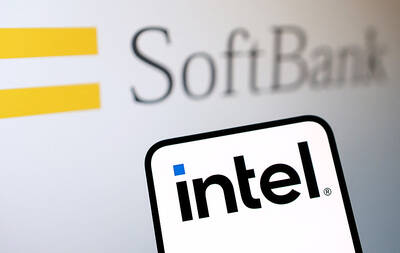The small but diverse group of classical-music lovers is in deep mourning after one of the pillars of its community died.
Primephonic, a Dutch-US app that streamed a wide catalogue of classical music, went dark last month, after being acquired by Apple Inc, which aims to fold the service into Apple Music. But why would the world’s largest company be interested in a closely held start-up with a relatively small user base, a few dozen employees and no startling technological innovation to boast of?
The answer: Primephonic understood the future. Apple has realized that streaming services will succeed or fail depending on whether they master the four things the tiny company, along with its classical-music peers such as Idagio, have figured out: metadata, discovery, curation and quality. That would hold true for video streaming, too, not just music. With the buyout, Apple is hoping to absorb Primephonic’s DNA.
Right now Apple Music, like most music-streaming services, is laughably bad at providing metadata beyond the most basic track information. The software developer and composer Gene de Lisa regularly tweets out howlers such as Apple Music listing the composer of the Pathetique Sonata as “unknown” (poor Beethoven).
Without the right metadata, the user interface breaks down; you do not know which movement is playing from which symphony. Search breaks down, too: Without metadata for conductor, orchestra, composer or movement, you cannot find the recording you want. Worst of all, effective recommendations and music discovery become virtually impossible.
This is not only a problem for classical music — it matters for anything more complex than the latest Top 40 single. In India, where we listen to Hindi film music, you might remember a song based on its singers, its composer, its lyricist, which film it was from, which year it was released or even which actors lip-synced the song in the movie.
Classic rock is the same: when a Beatles track pops up, you should know immediately if it is the stereo or mono mix, the original single or the album version, the 1995 Anthology alternate take or the 2000 remaster.
Search for an early rhythm and blues number and you might get some bad knock-off “re-recording” made in the 1980s when the original group was down on its luck. For anyone with more than a casual interest in music, streaming without proper metadata is a disaster.
Primephonic, because it worked on getting metadata right — and searchable — learned about its users faster as well. Especially compared with, say, Tidal, which knows I have spent two years listening to the Vienna Philharmonic, but still recommends hip-hop or [grudgingly] a playlist of movie soundtracks.
Knowing your user matters. We do not always open a streaming service already knowing what we want to hear or watch; the discovery process is half the fun. Primephonic did not just get algorithmic recommendations right, it had actual experts curating playlists — famous violinists picking their favorite violin-focused recordings, for example.
As you listen to an album you have discovered on Primephonic or Idagio, you can read the CD liner notes — and even, through Primephonic’s “maestro” service, get real-time notes on what to listen for in the orchestration. In the video world, the Criterion Channel regularly gets major filmmakers to pick and introduce their favorite movies.
Then there is sound quality. Tidal — and its French competitor Qobuz — sell themselves as having high-resolution “better than CD” tracks on offer. Primephonic did the same without much fuss and at a fraction of the price. Apple recently announced “lossless” streaming, and Spotify AB promised high-fidelity music months ago.
However, high-resolution tracks are not really a priority for Apple compared with the far weirder world of “spatial audio.” Apple has worked hard to install Dolby Atmos on hardware such as Airpods, for instance.
Scientists disagree about whether high-resolution streaming makes a perceptible difference to the human ear.
However, it is hard to find a classical fan who believes it does not, and it is niche, high-end classical music buyers who drive new standards in music reproduction.
RCA Victor’s Living Stereo orchestral recordings began to push stereo into the mainstream in the 1950s. Pop took a long time to catch up: The Rolling Stones were still recording mainly for mono as late as the Beggar’s Banquet album in 1968. CDs were designed for classical music — Sony Corp and Royal Philips NC agreed that they should be 74, not 60, minutes long so that they could accommodate the entire length of Beethoven’s Ninth Symphony.
Perhaps Apple is scared off by that integrating music streaming with audio hardware is a mess of contradictory protocols. The implementation of Airplay’s main competitor, Google Cast audio, is also very buggy. Speaker companies such as Sonos Inc exist to overcome these contradictions and investors are already rewarding them: Sonos stock has jumped almost 170 percent over the past year.
Classical music is demanding on both reproduction and search.
However, that is why classical music fans are who you should seek out if you want to figure out the future, as Apple has just done. Streaming, both audio and video, is going to come down to competition over metadata, quality and discovery, not breadth of catalogue or cost.
Mihir Swarup Sharma is a Bloomberg Opinion columnist. He is a senior fellow at the Observer Research Foundation in New Delhi and head of its Economy and Growth Programme.
This column does not necessarily reflect the opinion of the editorial board or Bloomberg LP and its owners.

Taiwan Semiconductor Manufacturing Co (TSMC, 台積電), the world’s biggest contract chipmaker, booked its first-ever profit from its Arizona subsidiary in the first half of this year, four years after operations began, a company financial statement showed. Wholly owned by TSMC, the Arizona unit contributed NT$4.52 billion (US$150.1 million) in net profit, compared with a loss of NT$4.34 billion a year earlier, the statement showed. The company attributed the turnaround to strong market demand and high factory utilization. The Arizona unit counts Apple Inc, Nvidia Corp and Advanced Micro Devices Inc among its major customers. The firm’s first fab in Arizona began high-volume production

VOTE OF CONFIDENCE: The Japanese company is adding Intel to an investment portfolio that includes artificial intelligence linchpins Nvidia Corp and TSMC Softbank Group Corp agreed to buy US$2 billion of Intel Corp stock, a surprise deal to shore up a struggling US name while boosting its own chip ambitions. The Japanese company, which is adding Intel to an investment portfolio that includes artificial intelligence (AI) linchpins Nvidia Corp and Taiwan Semiconductor Manufacturing Co (TSMC, 台積電), is to pay US$23 a share — a small discount to Intel’s last close. Shares of the US chipmaker, which would issue new stock to Softbank, surged more than 5 percent in after-hours trading. Softbank’s stock fell as much as 5.4 percent on Tuesday in Tokyo, its

COLLABORATION: Softbank would supply manufacturing gear to the factory, and a joint venture would make AI data center equipment, Young Liu said Hon Hai Precision Industry Co (鴻海精密) would operate a US factory owned by Softbank Group Corp, setting up what is in the running to be the first manufacturing site in the Japanese company’s US$500 billion Stargate venture with OpenAI and Oracle Corp. Softbank is acquiring Hon Hai’s electric-vehicle plant in Ohio, but the Taiwanese company would continue to run the complex after turning it into an artificial intelligence (AI) server production plant, Hon Hai chairman Young Liu (劉揚偉) said yesterday. Softbank would supply manufacturing gear to the factory, and a joint venture between the two companies would make AI data

The Taiwan Automation Intelligence and Robot Show, which is to be held from Wednesday to Saturday at the Taipei Nangang Exhibition Center, would showcase the latest in artificial intelligence (AI)-driven robotics and automation technologies, the organizer said yesterday. The event would highlight applications in smart manufacturing, as well as information and communications technology, the Taiwan Automation Intelligence and Robotics Association said. More than 1,000 companies are to display innovations in semiconductors, electromechanics, industrial automation and intelligent manufacturing, it said in a news release. Visitors can explore automated guided vehicles, 3D machine vision systems and AI-powered applications at the show, along